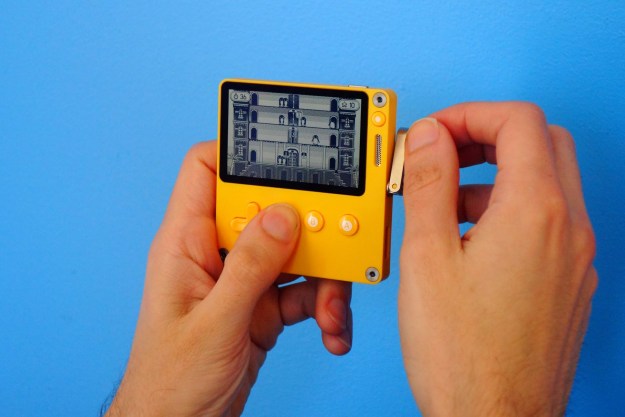
- Iconic design
- Crank gimmick works
- Creative games
- Screen isn't backlit
- Narrow appeal
- Pricey for what it is
If WarioWare were a video game system, it would be the Playdate.
Created by Untitled Goose Game publisher Panic, the niche handheld takes the energy of Nintendo’s fast-paced “microgame” series and bottles it up into an unusual piece of hardware. It’s a pint-sized, banana-yellow Game Boy that only runs games with simple black-and-white graphics and is controlled via two buttons, a D-pad, and a crank. Yes, a crank.
Like WarioWare and its five-second minigames, the Playdate’s limitations become its main appeal. The developers creating titles for it are forced to think small, inventing the kind of pocket-sized games that have been all but driven to extinction as handheld devices become as powerful as PCs. It’s a return to gaming’s primordial soup. Those who buy in are subscribing to an alternate dimension where game design branches off from reality thanks to a wacky control gimmick.
The Playdate is a delightful video game handheld that’s perfect for the indie game enthusiast who values fun and creativity above all else. Though for those who don’t fall into that category, it might feel a bit like a pricey inside joke – one that deserves to have its picture in the dictionary right next to the word “niche.”
Crank it up
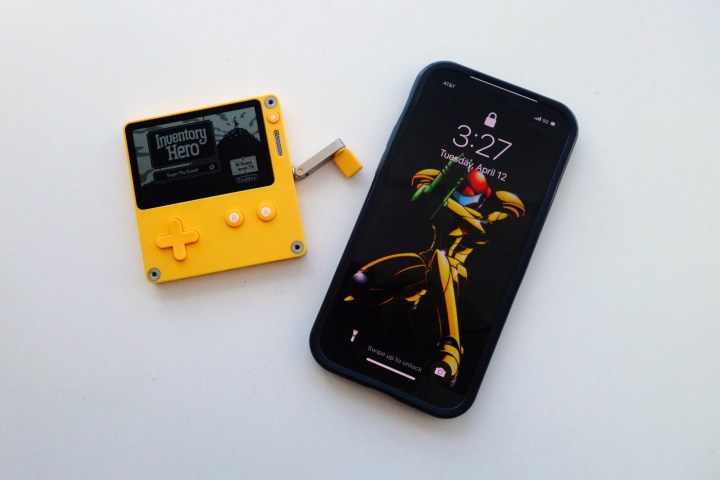
Just from a visual perspective, I fell in love with the Playdate the moment I unboxed it. From its bright-yellow plastic to its square design, it’s an adorable sight that instantly feels iconic. Even beyond its immediately gratifying aesthetics, I find myself impressed by the quality of the build. Its buttons have a satisfying, plasticky click to them, its miniscule speaker gets surprisingly loud, and the battery lasts longer than you’d expect. It may look like a cheap Tiger Electronics toy from the ’90s, but it’s only acting that part.
The device’s defining feature is the crank that protrudes from the right side of the system. The thin metal arm can be turned in a full circular motion to control games. It’s not a flimsy gimmick. The crank moves smoothly with no resistance, but never really feels like its danger of snapping off. In one game, I spun it around in circles as fast as I possibly could with no fear. As an added touch, the arm magnetically docks into the system when not in use, keeping it snug and safe.
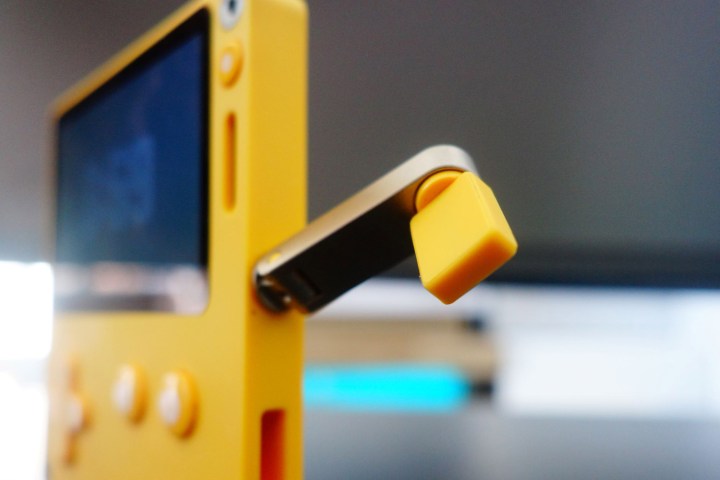
There’s only one area where the handheld fails to deliver: The Playdate’s screen isn’t backlit and instead uses a “super reflective” display. When there’s a good light source over my shoulder, it looks fantastic. The black-and-white visuals come in clear as day, with stark contrast that makes images pop. However, I’ve found it difficult to play in my apartment unless I’m sitting against a window during the daytime. If I’m on my couch, I can barely see what’s on screen at all unless I tilt it toward the overhead lights and play at an unnatural angle.
It’s a thoughtfully built handheld that takes its weird premise seriously.
I imagine Panic wanted to stay true to the original Game Boy here in not backlighting it, but it’s the one area where the high-concept design functionally backfires. I do have to admit that I have grown to enjoy the little ritual I’ve had to adopt to play it: Sitting on my bed, back against the window, cat curled up on my chest. Once again, the limitation leads to something special, though that one feels like an accident.
A few behind-the-scenes touches keep the device modern, while still leaving the nostalgic spirit intact. The Playdate connects to Wi-Fi, which means it can receive system updates or download games wirelessly like any console. I especially love that it includes an accessibility menu that lets players reduce flashing or flip the console’s display upside down. Details like that push it beyond the point of throwaway gimmick; it’s a thoughtfully built handheld that takes its weird premise seriously.
Mega microgames
The Playdate isn’t your typical handheld system when it comes to games. There’s no store where players can grab new releases à la carte (though external games can be sideloaded onto it). Instead, those who purchase a system are essentially subscribing to a service with their one-time purchase. Each player will get the same games delivered to them in seasons. For season 1, Panic will digitally deliver two games a week for 12 weeks. It’s less like buying a console and more like buying an old Game and Watch with 24 games preinstalled.
Playdate’s library is like the world’s best game jam delivered to you once a week.
That odd approach is part of the console’s unpredictable charm. I got a hit of delight, like a kid on Christmas, every time the device lit up and told me new games had been delivered. That response seems intentional, as games literally appear on screen gift-wrapped. Players will have no idea what they’re getting every week until they unwrap them.
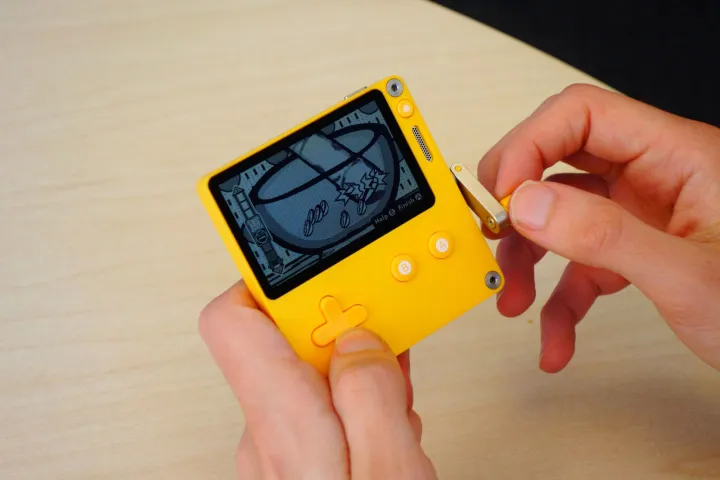
The only constant with season 1 is that no two games are the same. One day, I’d receive a puzzle game where I had to guide a ball around a maze of circles using the crank. The next, I’d get a full-fledged bird-watching adventure games. I was always excited to play each game because I truly never knew what I’d get.
Some games are truly brilliant, using the controls in inventive ways. Super Crush K.O. developer Vertex Pop created a spin on Asteroids called Hyper Meteor, where players turn their ship with the crank and boost into space rocks. Flipper Lifter is an addictive arcade game where players pick up penguins on an elevator and crank them to the correct floor. My absolute favorite game doesn’t even use the crank at all. It’s a match-three puzzle game called Pick Pack Pup where players match items into boxes and try to ship as many out at once as possible.
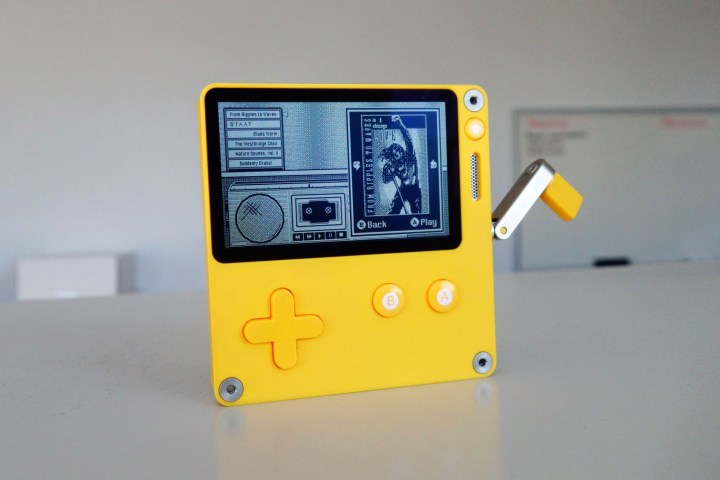
I found myself charmed by almost every title, even the ones that didn’t fully hit the mark. Sasquatchers is a tactics game about photographing cryptids, which is truly unlike anything I’ve played. It’s thin to the point of feeling like a design prototype, but I was still happy to play something so creative. Similarly, Echoic Memory is an ingenious music matching game where players have to tune distorted audio loops to hear them clearly. Playdate’s library is like the world’s best game jam delivered to you once a week.
Niche appeal
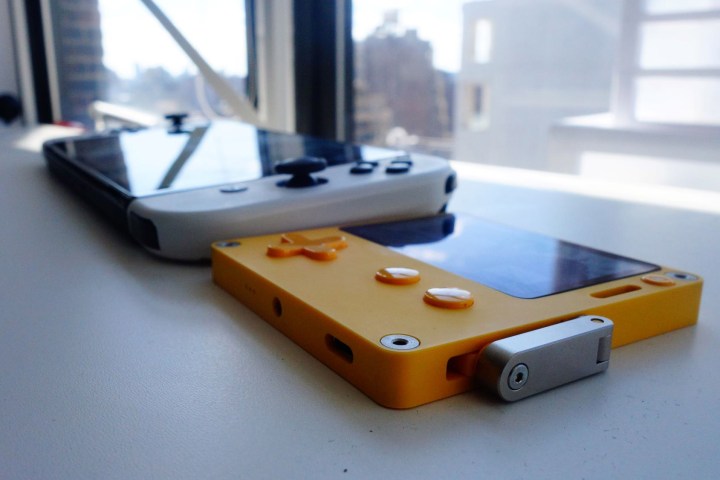
Not every game included in the batch of 24 is a winner, and Panic knows that, as its website specifically notes: “Will you love all of them? Probably not.” Indeed, a handful of the games ended up being duds for me, playing like an inside joke meant for fellow designers. Hitting a bad week where you’re only getting 20 minutes out of the device can be a bummer, but that’s the lottery you’re signing up for. There were enough hits to keep me entertained, but the curated nature of the project is sure to leave some early adopters disappointed.
That experimental edge makes it hard to wholeheartedly recommend the Playdate, even if I personally love it. At $179, it’s almost the cost of a Switch Lite. That’s a tough number to swallow considering that so many of the games included in season 1 can be “beaten” in an hour or less (one is just a simple music-making app, for instance). It can feel like a very expensive toy at times, though many would argue that’s all a game system is anyways.
Panic has firm plans to support the device past season 1. More games are in the works and its developer kit is readily available online for anyone who wants to use it. The company is also creating fun accessories for it, like a combination Bluetooth speaker/pen-holder attachment. I’m confident that those who buy one will have a fair amount to do with it through 2022 (though if you haven’t pre-ordered one yet, you won’t get it until 2023). I just don’t know how long-term that vision will be, as it’s hard to imagine that its install base will be large enough to attract developers for years to come.
The curated nature of the project is sure to leave some early adopters disappointed.
That’s a problem for another time. For the here and now, I’m smitten with the Playdate. I joyfully played every single game that was delivered to me and I’ll most assuredly eat up everything else it can run. Granted, I’m the exact person this device is for — someone who could write an essay from memory on the works of Bennett Foddy. It’s a niche appeal, but if you’ve found yourself bored by overly safe, big-budget games these days, the Playdate might be the cure you need.
Our take
The Playdate won’t be for everyone, but its intended audience will eat this charming little handheld up. Its unique crank control is already leading to some wildly creative video games, some of which are truly brilliant. At $179, though, it’s no small investment. To shell out for one is to sign an experimental contract with no way of knowing if it’ll pay off. Still, Panic earns some good faith here, delivering on its wacky premise with a consistently creative batch of games that make the Playdate more than a curious gimmick.
Is there a better alternative?
If you’re just looking for a good way to play retro handheld games, the Analogue Pocket is a must-own device. But otherwise, no, you will not find another tiny Game Boy with a crank that gets exclusive games delivered to it every month.
How long will it last?
The build quality of the device feels sturdy, though it’s really hard to gauge if the crank will hold up to heavy use long-term. In terms of season 1’s games, I’d reckon that players who try out everything will get around 25 hours out of it — though that’s dependent on how much you like the games.
Should you buy it?
Yes. If everything I said here sounds like your cup of tea, I’m confident you’ll love the Playdate. Though if you’re not an indie or retro enthusiast, this device is very much not for you.




